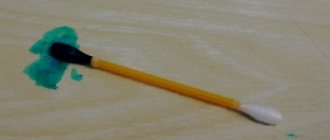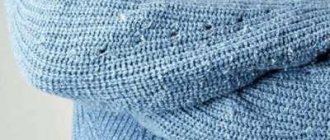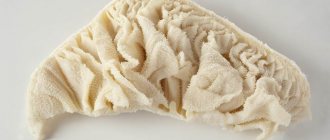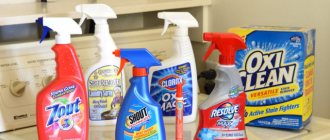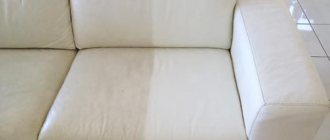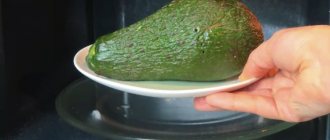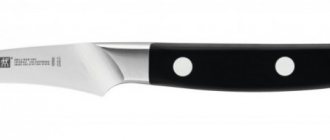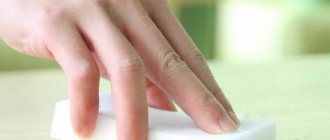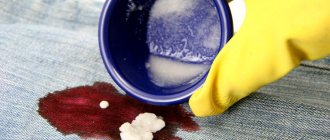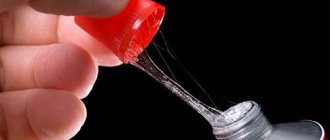When you need to quickly treat a wound or scratch, there is no time to choose a place for this procedure. One drop - and the question arises of how to remove iodine from furniture. This disinfectant, which is useful in everyday life, very often has to be wiped off from upholstery. Careless handling of a tiny bubble can lead to the appearance of huge blots on sofas, cabinet furniture and carpets.
Over time, iodine spilled on a sofa or cabinet furniture only becomes darker, and then this “beauty” is difficult to remove. Don’t waste time if such a nuisance happens, but start immediately saving the furniture. The means at hand that are always at hand and household chemicals will come to the rescue.
Removing iodine from the sofa with peroxide
The cheapest way to remove solution from sofa upholstery is to clean it with peroxide. But you need to be careful with this product, as peroxide can discolor the fabric. To protect the upholstery, you need to soap the entire area adjacent to the stain. This will prevent the upholstery from discoloring.
Then soak a cotton swab in peroxide and begin to gently wipe away the stain, moving from the edges to the center. As the tampon becomes dirty, you need to change it and wipe the stain with a dry cloth. But this method is good for fresh stains.
How to wash iodine
If it gets on your skin
Iodine disappears from the skin even faster than brilliant green. The following will help speed up the process:
- Soap. Wash your skin thoroughly with soap. Household stuff, although it doesn’t smell very nice, will be the most effective. Especially if you add a good stiff brush to it.
- Baking soda. Wet the skin with water and rub with baking soda. Do this over a sink or basin: the powder will fall off during the process. Leave the baking soda on the stain for 10-15 minutes, and then wash off the residue. After this procedure, it is advisable to apply a moisturizer: baking soda dries the skin.
- Alcohol. Wipe the stain with a cotton swab dipped in alcohol or strong alcohol - the stain will become noticeably lighter.
- Hydrogen peroxide. Wipe the skin with a cotton swab soaked in this antiseptic. Peroxide penetrates deeply into the pores and is safe for the epithelium. It is great if you need to wash off iodine from your face.
- Lemon. Squeeze some juice onto a cloth and rub the stain vigorously. Be careful with mucous membranes: if you clean the area around the eyes, mouth or nose with lemon, you can get burned.
If iodine gets on your clothes
Iodine is difficult to remove from fabric, but the sooner you begin to eliminate the stain, the greater the chance of restoring cleanliness to your clothes. You can remove dirt:
- Potato starch. Soak the items in warm water for 10–20 minutes and then wring them out. Sprinkle starch generously onto the stain, rub into the fibers with your hands and leave for 15 minutes. Rinse off the starch with clean water. If the stain turns out to be particularly stubborn, repeat the procedure several times. Then wash the clothes in the washing machine as usual.
- Ammonia. Add 10–15 drops of ammonia to a glass of water, pour it into a basin with clothes and add a liter of warm water. Leave the items to soak for 15–20 minutes, and then rinse them and wash as usual.
- Acetone. If something is dirty that you don’t want to wash, wipe it with a cotton swab soaked in acetone. Nail polish remover will also work.
If iodine gets on furniture
If the furniture is upholstered in fabric, use clothing cleaning methods. Don’t worry about wooden decorative elements: the iodine will evaporate from their surface on its own. Furniture made of plastic, glass, lacquered wood, chipboard, MDF, leather or leatherette can be washed:
- Potatoes. Cut the tuber in half and thoroughly wipe away any dirt. If necessary, the potatoes can be left on the stain for several hours: they will absorb the remaining iodine.
- Fixer for photographs. If you are an amateur photographer, there will be no problems with iodine removal. Take sodium thiosulfate and treat the stain with it. Then wipe the surface of the furniture with a damp cloth.
- Ascorbic acid. Dissolve 1-2 tablets in 100 ml of water. Soak a cotton swab in the liquid and wipe the stain until it disappears.
If iodine gets on the floor
How to remove iodine from linoleum, laminate or parquet
If the stain is not in the most visible place, you don’t have to worry too much: over time, the iodine will evaporate without your intervention. If you don't want to wait, use:
- Any detergent. Lather up a dish sponge or brush and scrub the stain thoroughly. If it doesn't disappear completely, it will at least become lighter.
- "Whiteness." Add 2-3 tablespoons of solution per liter of water, soak a rag in the liquid and cover the stain with it. If necessary, leave the stain to soak for several hours, and then wipe the floors with a cloth dampened in clean water.
- Baking soda. Moisten the iodine stain with warm water, sprinkle baking soda on top and cover with a damp cloth. Leave for 10–12 hours, and then wash the floors as usual.
Starch with water
An excellent way to save upholstered furniture from iodine is a mixture of potato starch and water. Starch can remove various stains. Iodine stains are no exception. It is necessary to prepare a fairly thick paste of starch and warm water, and then apply it directly to the stain. You can tell that the paste has started to work by changing its color - it should turn blue. The remaining pulp is washed off with warm water, the upholstery is dried, and then vacuumed. But if the stain is too old, then you need to first treat it with a stain remover and only then apply starch. When removing old stains, the starch paste is left on the stain for at least 12 hours. But if the stain is not too large, and it was planted not long ago, then you can get rid of the blot with the help of raw potatoes.
Cut the tuber and rub the cut cloth. Traces left after removal must be washed with dishwashing detergent. Iodine is very quickly absorbed into the fibers of the fabric, and therefore you should begin removing blots as quickly as possible.
How to wash green paint
If it gets on your skin
In general, you can do nothing. Human skin renews itself regularly, so the spots will fade over time. If you can't wait, use:
- Alcohol or any strong alcohol . Dampen a cotton swab or rag and rub the stain firmly. This method is the simplest and most universal, but, alas, is not suitable for those with dry or sensitive skin.
- Hydrogen peroxide or chlorhexidine digluconate. These liquids are sold at any pharmacy at affordable prices and are milder than alcohol.
- Makeup remover. Especially if the green paint gets on the thin skin of the eyelids or lips. The stain will not disappear the first time, but if you wipe the stain 4-5 times a day, it will come off faster.
If green paint gets on your clothes
It is much more difficult to remove green stains from things than from skin. Firstly, not all fabrics can be washed with aggressive detergents. Secondly, you need to act as quickly as possible: the older the stain, the more difficult it is to remove.
If an expensive item is dirty, the best solution is to go to the dry cleaner. For those who are ready to try to wash off the brilliant green on their own, we advise you to arm yourself with:
- Fat cream. The most gentle method for the most delicate items. Apply a thick layer of cream onto the stain, leave for 2-4 hours, and then wash the item with powder.
- Soapy solution. Works great on woolen items. Mix 3-5 tablespoons of liquid or grated bar soap in ½ liter of water. Treat the stain with this solution or soak the entire garment. Leave the green stuff to soak for 10–30 minutes and rinse the items with clean water.
- "Whiteness." Stains on light-colored clothing can be treated with this cheap bleach. Afterwards, the item will need to be washed in a washing machine with your usual detergents.
- Stain remover. The household chemicals market regularly pleases us with new inventions. Use your favorite bleach or stain remover, following the manufacturer's instructions. Most often, it is enough to apply the product to the dirt and then add it to the washing machine.
If green paint gets on the furniture
If furniture made of plastic, glass, varnished wood, chipboard, MDF, leather or leatherette is stained with green paint, wipe the surface with a damp cloth and carefully work on the stain with an eraser. If the eraser doesn't help, try removing the green paint with alcohol. If the furniture is made of untreated wood, unfortunately, you will have to use sandpaper.
If green paint gets on the fabric, follow the recommendations for removing stains from clothing. Just in case, we advise you to first check the reaction of the material to the cleaning agent. And if the furniture is especially valuable to you, contact a dry cleaner.
At home, it is safest to use a special stain remover. Apply the detergent concentrate or solution (according to the instructions) on the stain for several hours, and then wipe off the residue with a damp cloth.
If green stuff gets on the floor
How to remove brilliant green from linoleum, laminate or parquet
Act as quickly as possible. As soon as the green paint has spilled, blot up the excess with a napkin and do not let the stain spread all over the floor.
Wipe off stains with alcohol or strong alcohol. If you don’t have anything like this on hand, take gasoline, kerosene or glass washing liquid.
Wash off any remaining green paint with a stiff brush and soapy water.
How to remove green stains from carpet
You can’t hesitate here either. Blot any spilled green paint with a soft cloth so that it does not have time to penetrate deep into the fibers of the carpet. And immediately start treating the stain with a soap solution, a solution of washing powder (3-4 tablespoons per ½ liter of water) or a stain remover. If the carpet has short pile, try to remove the green stuff with a brush. If the pile is long, remove excess liquid with a clean cloth.
If all else fails, try a 10 percent ammonia solution. Be careful: it has a pungent odor that can remain in the apartment for a long time. Soak a rag or cloth napkin in ammonia and rub the stain vigorously.
Note to housewives
Contamination can be removed without harming the upholstery or cabinet furniture. To do this, follow simple tips:
- Always test the product on an inconspicuous area when treating surfaces. A strong stain remover or even peroxide can leave marks.
- Before cleaning, the surface of the furniture or upholstery should be cleaned of dust.
- First, they begin to erase the mark with a weak solution of the product, gradually increasing its concentration. The stain is always cleaned using movements from the edges to the center.
- Detergents must be alternated with rinsing.
Remember: when removing stains from fabrics, stain removers thin the material. Therefore, it is not recommended to use such products too often or apply them in concentrated form.
You will get rid of blots faster if the furniture is located outdoors. In this case, the iodine will gradually evaporate, since this tincture is alcoholic.
What to use to clean furniture
Before you begin cleaning, you need to prepare the tools that will be needed to carry out the process:
- kitchen sponge;
- cosmetic type discs;
- lemon and ascorbic acid tablets;
- hydrogen peroxide;
- raw potatoes, cut in half;
- dishwashing detergent and soda;
- Stain remover that contains chlorine.
Many of these products are present in almost every apartment; if something is missing, it can be easily purchased in every store. In order not to run around looking for the right component later, it is better to prepare everything in advance.
Precautions and general advice
Our company's experts have prepared recommendations on how to remove iodine from furniture, but you must remember that no household product guarantees 100% safe stain removal. The effect on old marks is low, and the upholstery may also fade, so be sure to test on a small area of fabric before applying the compounds!
Of course, if iodine gets on the upholstery, it is better to resort to dry cleaning the sofa at home, but if you do not want to order the service yet, then use the safe methods that we provide below.
Solution with "sodium thiosulfate"
Having postponed dry cleaning of upholstered furniture at home until later, you can try to remove the stain using a medicinal product called “sodium thiosulfate”. This mixture effectively fights even old stains; prepare and use it as follows:
After you have cleaned the furniture from dirt and stains, it is recommended to place a towel on the treated area and then press on it. The fabric will absorb excess moisture, so the upholstery will dry much faster. Please note that the solution in question is quite powerful and can lighten the fabric, so it must be applied to the stains pointwise. If the iodine stains are very small, then use a pipette or a cotton swab for treatment.
How to remove iodine from furniture using ammonia, liquid soap and water?
Before dry cleaning upholstered furniture and products with other types of upholstery, cleaners evaluate the composition of the material, which allows them to select the right chemistry that will not cause damage to sofas and armchairs. It is impossible to perform this procedure at home, so each product has to be tested, choosing the best using trial and error. Ammonia solution, as practice shows, demonstrates high efficiency.
If you decide to get rid of iodine stains using ammonia, then do not forget that the method is only suitable for light-colored upholstery!
Isopropyl alcohol for leather furniture
As part of proper care of leather furniture, it is necessary to remove fresh stains, because old traces of iodine are almost impossible to remove at home. For this work, you can use isopropyl alcohol - a safe antiseptic (destroys up to 99% of bacteria), which in developed countries is used in the production of medicines, cosmetics for care and personal hygiene, perfumes, and household chemicals (a substitute for ethyl alcohol). To remove iodine stains from furniture, it is recommended to use not a 71%, but a 91% solution. When preparing the solution, add 1 tbsp. l. l isopropyl alcohol in a glass of cold water, and then treat the stained area with a sponge or sponge soaked in the product.
Now you know how to remove iodine stains from furniture, but it is worth remembering that you cannot use all of the above remedies one after another. This approach entails fading of the upholstery, changes in the structure of the pile, and accelerated wear of the material. If you have applied an ammonia or alcohol solution, but the stain has not faded or is smeared, it is better to immediately contact a dry cleaner.
Professionals will remove traces of iodine, help you remove grease stains from upholstered furniture, and also remove dust, dust mites and unpleasant odors from upholstery. Before work begins, the chemistry and cleaning method that are ideal for your furniture will be selected. Quality equipment will draw out dirt, moisture and detergent residues from the fabric, so you won't encounter problems with mold and mildew. We hope that we have helped you choose the best method to get rid of traces of iodine once and for all!
How to remove iodine stains using traditional methods
If there is dirt on the linoleum, it is recommended to wipe it off with a damp, clean cloth or napkin. This option is suitable in cases where the antiseptic has not been absorbed into the coating. You can also use folk remedies:
We recommend reading: How to remove brilliant green from linoleum
- a mixture of table salt and soda. In this case, you will need to wipe the area with a cloth moistened with warm water, and then apply a paste made of salt and baking soda to the stain. After this, cover with a small piece of cloth. After 11 hours, the pulp is removed and the linoleum is thoroughly washed;
- lemon – this option is great for fresh stains. Lemon juice is applied to a cotton swab and scrubbed thoroughly.
We recommend reading: Baking soda: beneficial properties, uses, how to take
If there is a need to remove iodine from the sofa, you can use the following methods:
- milk is used when iodine has not had time to be absorbed into the upholstery of the sofa. Milk is applied to problem areas and left for literally 25 minutes. If after such manipulation the mark cannot be wiped off, then it is recommended to use special means;
- acetone is the most effective remedy, but it is important to consider that, having a high level of aggressiveness, the product can harm upholstered furniture. Initially, it is recommended to check the reaction of the upholstery to acetone in an inconspicuous area.
When iodine gets on a wooden table, an excellent solution would be to use the following methods:
- hairspray - you need to spray a small amount of hairspray, then carefully scrub the area of contamination with a toothbrush and leave for 1.5 hours. If the mark has faded, but it was not possible to wipe it off completely, then repeat the procedure;
- vinegar. In this case, take 9% vinegar. Moisten a cotton pad with it and wipe the problem area on the table. The secret is that iodine enters into a chemical reaction, after which crystallization begins and it is quite easy to wipe off the existing trace.
As practice shows, fresh stains are much more effective at removing.
Attention! It is recommended to follow safety precautions when working with acetone.
Baking soda
The most popular and proven option is to remove stains with baking soda. To do this, the problem area must be moistened, then applied baking soda and covered with a damp cloth. Wait 10 hours, then remove the remaining loose component with a sponge and rinse the area, adding a detergent component. If the stain is not removed, the process must be repeated.
General recommendations
Any chemical agent for removing iodine must be used only in a diluted state. And only if it was not possible to completely remove the stain with a diluted product, it is worth increasing the concentration of the drug. And do not forget that aggressive chemicals such as stain removers greatly weaken the upholstery material, so their use is undesirable.
The most important thing is that if you were unable to completely remove the iodine stain from the surface of your favorite sofa, do not be upset. Iodine is a volatile substance, so in a well-lit and ventilated room, the stain will gradually disappear from the fabric completely and without additional effort.
Products and tools for removing iodine stains
It is convenient to wipe off small iodine stains with cotton pads and swabs, changing them often. Devices for removing iodine stains should not have sharp edges or be hard. To apply the preparations, you can use kitchen sponges and brushes that do not damage the fabric. Clean the varnished surface with a regular eraser; for leather, use soft cloths.
It is convenient to work with sponges, cotton swabs, and ear sticks, which allow you to treat small stains without smearing them on the upholstery. They can be changed frequently, used for applying the substance and rinsing.
It is convenient to dry surfaces with paper towels or dry light-colored rags.
Chemicals
When purchasing a product, you need to pay attention to the composition and recommendations of the manufacturer, and choose it taking into account the specifics of the material. Any chemical is aggressive to some extent, and in order to reduce the negative effect it is better to dilute it with water before use.
Special and non-traditional means are effective:
For old stains
For white upholstery For coarse fabrics Most of these products are easy to use and effective, but are not used for all surfaces. Some compounds are aggressive, have a pungent odor, and can cause allergies. When handling them, you must use gloves, wash the fabric well, and ventilate the room.
If you follow the precautions and rules of use, the chemicals are safe for health and do not harm furniture.
Folk remedies
A mixture of soda and vinegar is one of the most gentle means for removing iodine from furniture. The advantage of home remedies is that they are always at hand. There is no need to run to the store, look for expensive powders, buy them in reserve, not knowing exactly how much you will need.
From common substances found in the household, you can prepare effective cleaning compositions:
You can remove iodine from furniture with aspirin, boric alcohol or sodium thiosulfate purchased at the pharmacy, ordinary lemon juice, ascorbic acid or darkroom fixer. All products act delicately and quickly, are suitable for upholstered and cabinet furniture, are safe for people and are inexpensive.
Folk wisdom often turns out to be more practical than the achievements of leading manufacturers of household chemicals. Using available products, you can clean various surfaces.
In case of contact with furniture
For fabric-covered furniture, iodine stains can be dealt with using one of the methods listed above for cleaning clothing. If the product is made of natural wood, do not worry - the iodine will evaporate after a while, leaving no traces on the surface. But from furniture made of plastic, MDF, leather/leatherette, glass, iodine can be removed using:
Potatoes – peel a small potato (raw), cut a suitable piece. Rub the stain thoroughly with it; if necessary, leave the potato directly on the furniture for a couple of hours - it will pick up the remaining iodine.
Ascorbic acid - one tablet dissolved in 50 ml of water is enough to remove the stain. Using a cotton pad soaked in the prepared mixture, gently wipe the surface until the dirt disappears.
Sodium thiosulfate - if you are interested in photography and have fixer lying around at home, feel free to use it to combat iodine stains. Apply a small amount of product to the contaminated surface. Then wipe it with a clean cloth.
How to remove iodine from leather furniture
Isopropyl alcohol is excellent for removing iodine from a light leather sofa or chair. Place a cotton pad soaked in liquid on the stain. After some time, you can change the cotton wool, but under no circumstances rub the stain further.
This procedure will help reduce the intensity of the stain. The residues will disappear on their own over time, since iodine is a volatile substance and has the ability to evaporate. This will happen faster if the spot is exposed to sunlight.
If you don’t have alcohol at home, you can replace it with regular vodka.
Some useful tips
When removing stains, you need to follow some recommendations, then you will cause minimal damage to the surface.
An alcohol solution of iodine is volatile, so it evaporates on its own over time from many types of surfaces, especially hard ones. But sometimes there is no time to wait for such “self-cleaning” and you need to remove the stain urgently, then our advice will come in handy.
Iodine is an excellent antiseptic, but the substance is liquid, so it often splashes out of the bottle during use. If brown-yellow drops get on the floor covering or furniture upholstery, it will be very difficult to remove them, because iodine provides a stable coloring effect. We know this problem firsthand, so we bring to your attention useful tips on how to remove iodine from upholstered furniture and sofas using simple means.
